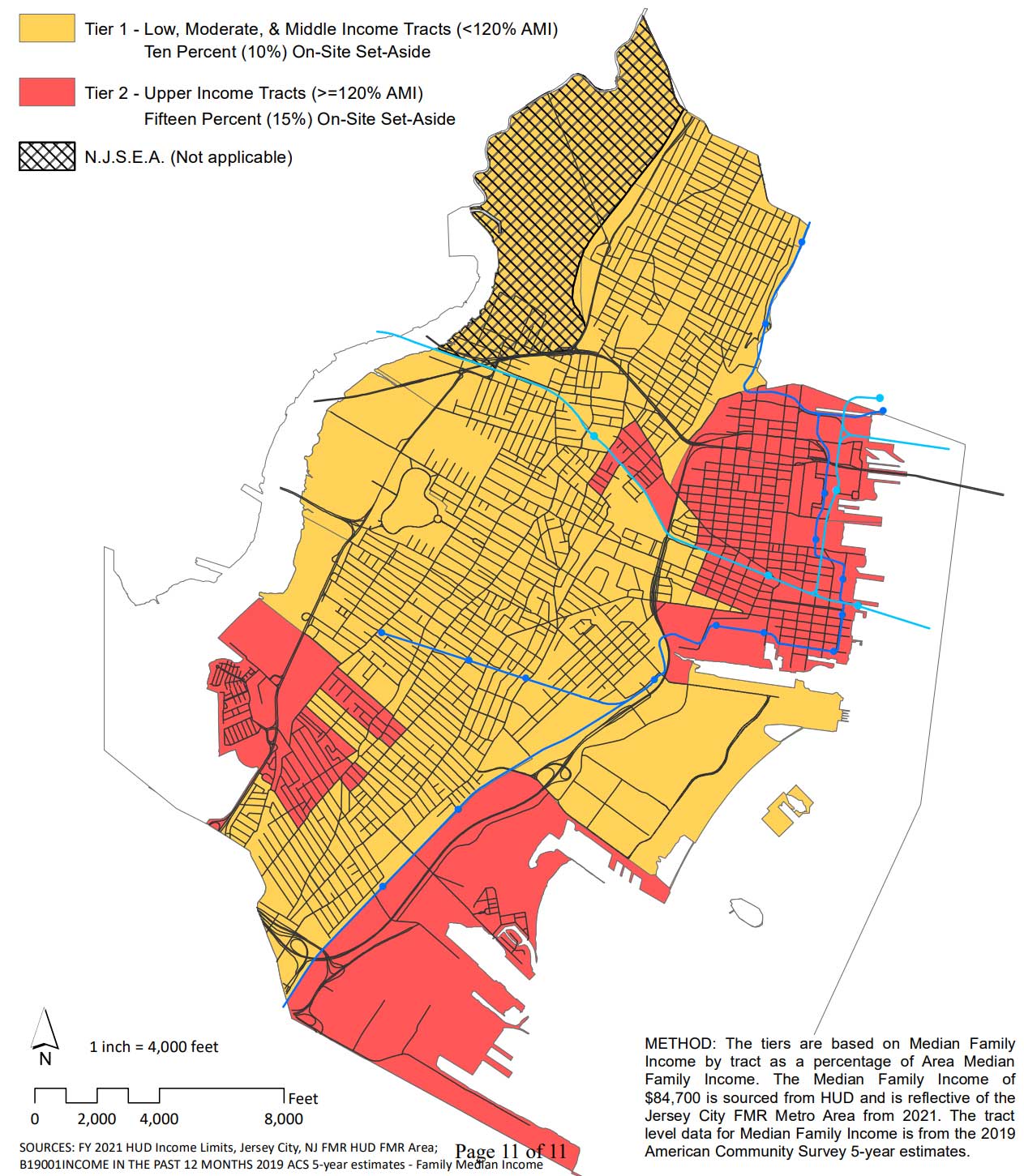
A long battle over how to best create new affordable housing in Jersey City could reach its conclusion by the end of this year as compromise legislation that appears to have won majority support has taken a step forward.
During their November 29 meeting, Jersey City’s Council voted 7-0-1 with Councilman Rolando Lavarro abstaining to introduce a new inclusionary zoning ordinance. The regulations are the result of a collaboration between the City Council, Jersey City’s Housing Department, and the Fair Share Housing Center, a non-profit dedicated to creating affordable housing in New Jersey.
The new requirements apply to all developments over 15 residences that request more than four additional units or an additional 5,000 square feet of residential floor area through a redevelopment plan amendment or variance. The regulations split the city into two tiers and a new project’s affordable housing requirement will depend on the neighborhood it falls within.
Developments in Tier 1 will have a 10 percent mandatory affordable housing set-aside to be required on-site, a notable change from current requirements. Neighborhoods designated as Tier 1 span most of the city and include much of the rapidly developing Journal Square and hot neighborhoods like The Heights.
Affordable housing requirements in Tier 2 are higher, as all developments located in those areas will require 15 percent affordability on-site. A map attached to the ordinance reveals that the areas in Tier 2 comprise the entirety of Downtown including Liberty Harbor plus a portion of Bergen-Lafayette where developments like The Cove have been proposed.
Other zones designated as Tier 2 include portions of the Hilltop, Greenville Yard, the southern waterfront near Port Liberté, and the area of West Side around NJCU and Bayfront. The tiers are based on the percentage of Area Median Income within different tracts from the 2020 Census.
“We made a commitment during the campaign that this would be a priority for us, and we are reinforcing our words with action,” said Jersey City Mayor Steven Fulop when announcing the proposal. “This affordable housing ordinance aligns directly with our efforts to create an equitable and inclusive City, where our most vulnerable residents have the support and resources they need for enhanced quality of life.”
The introduction of the new regulations follows a previous inclusionary housing ordinance from 2020 that was thrown out by the courts. It was challenged by the Fair Share Housing Center, which claimed the regulations were “deeply flawed” and riddled with favorable loopholes for developers.
Adam Gordon, Executive Director of Fair Share Housing Center, voiced support for Jersey City’s new measure. “Once enacted and enforced, the ordinance will provide much-needed affordable homes integrated into new development for working families of all sizes and income levels in Jersey City,” he said. “As rents and home prices in Jersey City and across the state reach record highs, it is critical that towns and cities enact policies to ensure that new development is inclusive and equitable so that working families are not displaced.”
Before becoming law, the inclusionary ordinance will need to be passed by the City Council on second reading, which could happen as early as their next meeting on December 15.


